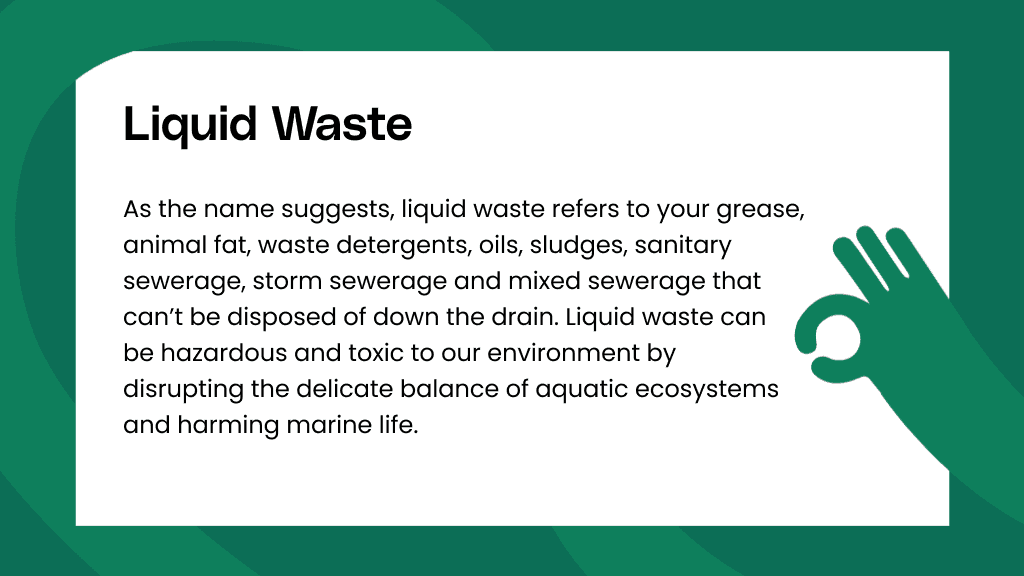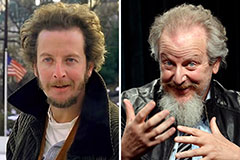What Does Reclaim Waste Do?
Table of ContentsThe 45-Second Trick For Reclaim WasteReclaim Waste - An OverviewReclaim Waste Fundamentals ExplainedNot known Factual Statements About Reclaim Waste Fascination About Reclaim Waste
Explore the types, events, and forms of liquid waste. Residential sewer waste describes the waste and items from a residential sewage-disposal tank. This kind of waste is created by people in residences, institutions, and various other structures. This only consists of sewage-disposal tanks that have a drain area. The proper administration and disposal of domestic sewage waste need liquid waste to be moved to a sewer therapy plant where the correct approaches and tools are related to detoxify and dispose of waste.
Industrial waste typically includes possible risks, such as flammable products or a mix of fluid and solid waste items, and requires an advanced and in-depth disposal process. The disposal of industrial waste typically includes the filtering of waste before transport to make certain risk-free and appropriate disposal. Hazardous waste is created from by-products and overflow of industrial processes and production.
This type of waste can not use the same sewage administration transport or procedures as septic or industrial liquids. The commercial waste management procedure calls for the evaluation and testing of fluid waste prior to it goes through the disposal procedure (industrial wastewater treatment). Runoff waste is the fluid waste that comes from overflow and excess stormwater in very populated locations or cities
Drainage waste can create contamination and flooding otherwise handled properly. Discover a lot more regarding drain cleaning and waste management. Ensuring proper waste administration can prevent calamities and decrease environmental harm. Both individuals in residential setups and experts in industrial or production industries can take advantage of comprehending the processes and regulations of liquid waste administration.
The Buzz on Reclaim Waste
Get in touch with PROS Providers today to discover our waste monitoring and disposal services and the proper ways to care for the fluid waste you produce.
(https://boom-fruit-496.notion.site/Industrial-Wastewater-Treatment-The-Key-to-a-Cleaner-Greener-Future-13c9fdbb2e9380eca32fee3a79088ddf?pvs=4)
Do you understand what happens to your water when you end, purge the commode or drain pipes the washing equipment? No? Well, it deserves knowing. This so-called 'wastewater' is not only an essential source but, after treatment, will certainly be launched to our land, rivers or the sea. Utilized water from commodes, showers, baths, kitchen sinks, washings and commercial procedures is called wastewater.

water used to cool machinery or clean plant and equipment). Stormwater, a kind of wastewater, is drainage that flows from farming and metropolitan areas such as roofing systems, parks, yards, roads, courses and rain gutters right into stormwater drains, after rainfall. Stormwater moves untreated directly to regional creeks or rivers, eventually reaching the sea.
How Reclaim Waste can Save You Time, Stress, and Money.
In Queensland, a lot of site web wastewater is dealt with at sewer treatment plants. Wastewater is moved from residential or industrial sites through a system of drains and pump terminals, known as sewerage reticulation, to a sewage therapy plant.
The Division of Natural Resources encourages neighborhood governments concerning managing, operating and maintaining sewerage systems and therapy plants. In unsewered locations, city governments might require householders to install private or family sewer therapy systems to treat domestic wastewater from toilets, kitchens, bathrooms and laundries. The Division of Natural Resources authorises making use of home systems when they are shown to be efficient.
Most stormwater receives no therapy. In some new subdivisions, therapy of some stormwater to remove trash, sand and crushed rock has actually begun using gross toxin catches. Wastewater therapy happens in four phases: Removes strong issue. Bigger solids, such as plastics and other things mistakenly released to sewers, are eliminated when wastewater is passed through screens.
Wastewater then flows into big containers where solids resolve and are eliminated as sludge. Grease and scum are skimmed from the surface. Uses tiny living organisms knows as micro-organisms to damage down and get rid of remaining liquified wastes and fine particles. Micro-organisms and wastes are integrated in the sludge. Gets rid of nitrogen and phosphorus nutrients that might cause algal flowers in our rivers and endanger aquatic life.
The 8-Minute Rule for Reclaim Waste
Nutrient removal is not offered at all sewage therapy plants due to the fact that it needs pricey specialist equipment. It is ending up being a lot more usual in Queensland. Clear liquid effluent produced after treatment may still include disease-causing micro-organisms. If this effluent is launched right into waterways such as rivers or the sea, the micro-organisms will at some point pass away out.

A lot of wastewater flows right into the sewerage system. Under the Act, neighborhood governments provide authorizations and permits for ecologically relevant activities (ERAs) involving wastewater releases that may have a local impact.
The 4-Minute Rule for Reclaim Waste
Otherwise, samples are considered laboratory analysis. Usually numerous examinations are needed to develop the degrees of each of the various pollutants such as oils, hefty metals and pesticides in water. Tracking supplies factual info concerning water quality and can confirm that permit problems are being fulfilled. The info obtained via surveillance provides the basis for making water top quality decisions.
 Daniel Stern Then & Now!
Daniel Stern Then & Now! Marcus Jordan Then & Now!
Marcus Jordan Then & Now! Rachael Leigh Cook Then & Now!
Rachael Leigh Cook Then & Now! Bill Murray Then & Now!
Bill Murray Then & Now! Teri Hatcher Then & Now!
Teri Hatcher Then & Now!